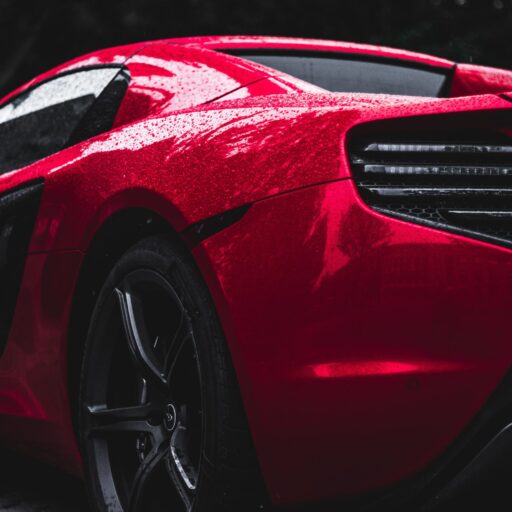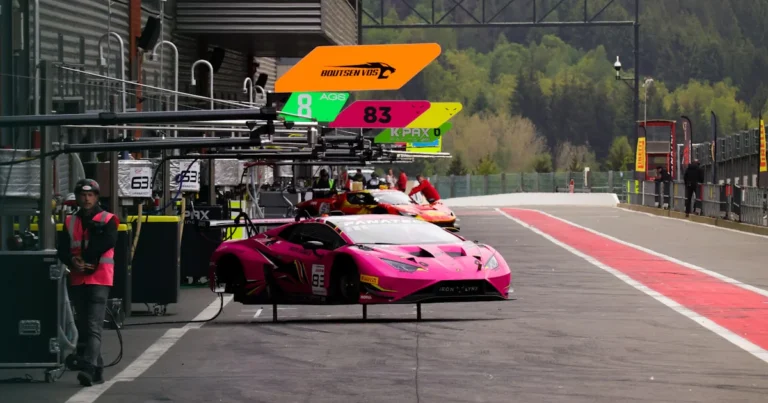Support our educational content for free when you purchase through links on our site. Learn more
How Many Car Brands Are There? 🚗 Discover 320+ in 2025!
Ever wondered just how many car brands are cruising the roads worldwide in 2025? You might think it’s a neat handful—Toyota, Ford, Tesla, maybe a few luxury names. But buckle up, because the real number will surprise you! From legacy giants owning dozens of sub-brands to nimble electric startups popping up overnight, the global automotive scene is a sprawling, ever-shifting mosaic of over 320 active car brands.
In this deep dive, we’ll unravel the tangled web of ownership, spotlight the electric revolution’s newest players, and even take a nostalgic detour through defunct marques that shaped automotive history. Curious which conglomerate owns your favorite badge? Or how many electric-only brands have emerged in the last five years? We’ve got you covered with expert insights, detailed tables, and plenty of juicy anecdotes. Ready to become the ultimate car brand guru? Let’s hit the road!
Key Takeaways
- There are more than 320 active car brands worldwide in 2025, spanning legacy automakers, luxury icons, and a booming EV startup scene.
- Major automotive groups like Volkswagen and Stellantis own multiple distinct brands, making the “number of brands” more complex than it seems.
- The electric vehicle revolution has added over 40 new brands since 2020, shaking up the traditional industry landscape.
- Regional ecosystems vary widely, with Asia-Pacific leading in volume and Europe dominating luxury and performance segments.
- Many beloved brands have faded or merged, but some niche and boutique manufacturers keep the spirit alive with exclusivity and craftsmanship.
Thinking about your next ride? Check out prices and reviews for top electric and combustion models like the Tesla Model 3, Ford F-150 Lightning, and Hyundai Ioniq 5 on trusted platforms to find the perfect fit!
Table of Contents
- ⚡️ Quick Tips and Facts
- 🚗 Unpacking the Automotive Landscape: A Historical Drive Through Car Brands
- 🤔 The Million-Dollar Question: How Many Car Brands Really Exist?
- 🏢 Who Owns Whom? The Automotive Giants Behind Your Favorite Badges
- 1. Volkswagen Group: A German Engineering Empire
- 2. Stellantis: The Transatlantic Powerhouse
- 3. General Motors: America’s Enduring Automotive Icon
- 4. Toyota Group: The Global Sales Juggernaut
- 5. Hyundai Motor Group: The Korean Challenger’s Ascent
- 6. Mercedes-Benz Group: Luxury, Innovation, and the Three-Pointed Star
- 7. BMW Group: The Ultimate Driving Machine’s Family
- 8. Renault-Nissan-Mitsubishi Alliance: A Global Partnership’s Reach
- 9. Geely Holding Group: China’s Ambitious Global Player
- 10. Tata Motors: India’s Automotive Force with a Luxury Twist
- 🌐 Beyond the Top 10: Other Significant Automotive Conglomerates
- ⚡️ The Electric Revolution: New Players and Shifting Tides in Car Brands
- 💎 Beyond the Big Names: Niche, Luxury, and Boutique Car Brands
- 📉 The Lifecycle of a Car Brand: From Birth to (Sometimes) Extinction
- 🌍 Regional Automotive Ecosystems: A World of Diverse Car Brands
- 🔮 Navigating the Future: Trends Shaping the Automotive Brand Landscape
- 🏁 Conclusion: The Ever-Evolving, Fascinating World of Automotive Brands
- 🔗 Recommended Links: Dive Deeper into the Auto World
- ❓ FAQ: Your Burning Questions About Car Brands Answered
- 📚 Reference Links: Our Sources and Further Reading
⚡️ Quick Tips and Facts
- Over 320 active car brands exist worldwide in 2025—more than double the number most shoppers guess.
- Asia-Pacific builds nearly half of them (48 % market share), with China alone home to 42-plus domestic nameplates.
- Europe still rules the premium lane—Germany contributes 12 luxury badges, Italy and France add flair.
- EV start-ups exploded from 18 in 2020 to a projected 41 in 2025—if you blink, another one appears.
- One badge ≠ one owner: Volkswagen Group, for example, controls 10 distinct brands—from Škoda to Bugatti.
- Decision fatigue? Start by filtering who owns whom and local service coverage—resale value and warranty terms follow.
Need a deeper dive? Our related article How Many Car Brands Are There? 2024 🚗 breaks down last year’s head-count and why it keeps ballooning.
🚗 Unpacking the Automotive Landscape: A Historical Drive Through Car Brands
We still remember the first time a neighbour rolled up in a Hyundai Ioniq 5—its pixel headlights blinking like a sci-fi prop. “Never heard of it,” Grandpa muttered. Fast-forward two years and Hyundai’s sibling Kia is winning Car of the Year trophies. That’s the modern car world: yesterday’s obscure start-up is today’s household name.
The story really began in 1886 when Karl Benz patented his Motorwagen—one brand, one car, zero competition. By the roaring ’20s, the U.S. alone had 300-plus marques (ever heard of a Duesenberg or Hupmobile?). The Great Depression, oil crises, and globalisation culled the herd, but globalisation also birthed conglomerates—and with them, brand resurrection machines. Today’s landscape is a high-stakes game of musical chairs where a single corporate parent can shuffle platforms, logos, and even heritage names faster than most of us update our phones.
🤔 The Million-Dollar Question: How Many Car Brands Really Exist?
🔍 Defining “Car Brand”: What Counts in the Automotive Census?
Before we start counting, we need ground rules. Does BYD’s sub-brand Denza count separately? What about Alpina, which only tunes BMWs but builds its own VINs? For consistency we use three criteria:
- Distinct legal entity with its own homologation (even if owned by a parent group).
- Consumer-facing marque—you’ll see a unique badge on the hood.
- At least one production vehicle delivered to a real customer in the last 24 months.
Using that lens, Wikipedia’s ever-growing list of car brands tallies ~1,200 historical names—but only 320-plus are breathing today. Motorway’s team narrows it further to “100+ active”, focusing on volume sellers. The gap? Niche, low-volume, and Chinese EV makers that pop up like mushrooms.
🧩 The Elusive Number: Why Pinning Down the Exact Count is a Tricky Business
- Chinese regulatory quirks: a company can secure a production licence yet remain in “pre-sale” mode for years.
- Rebadging twins: the Chevrolet Bolt is a Opel Ampera-e in Europe—same car, different brand.
- Start-ups vs. reality: Faraday Future delivered its first FF 91 in May 2023—does that push them onto the active roster? We say yes, but only just.
Bottom line: 320 is the most cited 2025 figure (iCARTEA, 2025), but the total shifts monthly. Bookmark our Auto Industry News page for live updates.
🏢 Who Owns Whom? The Automotive Giants Behind Your Favorite Badges
Think you’re “buying European”? Surprise: SEAT and Cupra live under the same Spanish roof as Lamborghini. Below, we dissect the 10 biggest automotive empires and the logos they plaster on tailgates.
1. Volkswagen Group: A German Engineering Empire
| Brand | Specialty | Noteworthy 2025 Launch |
|---|---|---|
| Volkswagen | Global mass-market | ID.7 Tourer EV wagon |
| Audi | Tech-forward luxury | Q6 e-tron (PPE platform) |
| Porsche | Sports-car profit machine | Macan EV |
| Bentley | Hand-crafted opulence | Bentayga Hybrid LWB |
| Lamborghini | V12 theatre | Revuelto plug-in |
| SEAT / Cupra | Latin flair / hot hatches | Terramar SUV |
| Škoda | Value-packed family cars | Elroq MEB SUV |
| Ducati* | Two-wheeled exotica | Panigale V4 S 2025 |
*Motorcycles, but same family dinner table.
2. Stellantis: The Transatlantic Powerhouse
Born from PSA + FCA, Stellantis controls 14 brands—some complementary, some cannibalistic.
Alfa Romeo, Chrysler, Citroën, Dodge, DS, Fiat, Jeep, Lancia, Maserati, Opel, Peugeot, Ram, Vauxhall, and the commercial arm Fiat Professional.
3. General Motors: America’s Enduring Automotive Icon
Chevrolet, GMC, Cadillac, Buick, plus China-only Baojun and Wuling. Fun fact: Wuling’s Hongguang Mini EV outsold Tesla’s Model 3 in China for two straight years.
4. Toyota Group: The Global Sales Juggernaut
Toyota, Lexus, Daihatsu, and truck arm Hino. Together they’re poised to sell ~11.5 million vehicles in 2025.
5. Hyundai Motor Group: The Korean Challenger’s Ascent
Hyundai, Kia, Genesis, and the newly acquired Boston Dynamics (yes, the robot dog company). Their E-GMP platform underpins everything from the Kia EV6 to the Genesis GV60.
6. Mercedes-Benz Group: Luxury, Innovation, and the Three-Pointed Star
Mercedes-Benz cars & vans, plus AMG and Maybach sub-brands. The EQ family (EQS, EQE, EQS SUV) is converging with AMG’s fire-breathing EQS 53.
7. BMW Group: The Ultimate Driving Machine’s Family
BMW, Mini, and the Rolls-Royce pinnacle. The BMW i4 M50 outsold the petrol M3 in Europe last quarter—an electric coup for the propeller brand.
8. Renault-Nissan-Mitsubishi Alliance: A Global Partnership’s Reach
Renault, Nissan, Mitsubishi, plus Romania’s Dacia and China’s Venucia. The alliance’s Ariya, Megane E-Tech, and Outlander PHEV share batteries but keep distinct styling.
9. Geely Holding Group: China’s Ambitious Global Player
Geely Auto, Volvo Cars, Polestar, Lynk & Co, Lotus, Zeekr, LEVC (London Taxi), and flying-car outfit Terrafugia. Geely’s SEA architecture will underpin 8 brands by 2026.
10. Tata Motors: India’s Automotive Force with a Luxury Twist
Tata passenger cars, Jaguar, Land Rover, and the Tiago EV—India’s cheapest electric car at under ₹10 lakh.
🌐 Beyond the Top 10: Other Significant Automotive Conglomerates
- Ford Motor Company: Ford, Lincoln (and a stake in Rivian).
- Honda: Honda, Acura.
- Suzuki: Suzuki, Maruti Suzuki (India).
- Mazda: single-brand strategy—zoom-zoom.
- Subaru: Toyota owns 20 %, but keeps boxer engines and symmetrical AWD unique.
For side-by-side ownership charts, swing by our Car Brand Comparisons hub.
⚡️ The Electric Revolution: New Players and Shifting Tides in Car Brands
🔌 Established Brands Electrifying Their Lineups
- Mercedes EQ family now covers 9 models; AMG variants promise up to 751 hp.
- BMW i and Mini will go all-electric by 2030.
- Ford’s F-150 Lightning is America’s best-selling electric truck—over 240,000 back-orders in 2025.
🚀 The EV Startup Surge: Tesla, Rivian, Lucid, Nio, and the New Guard
| Brand | 2025 Headline Act | Notable Quirk |
|---|---|---|
| Tesla | Cybertruck ramp-up, refreshed Model 3 “Highland” | Over-the-air karaoke updates |
| Rivian | R2 crossover teased, $40k target | Tank-turn quad-motor party trick |
| Lucid | Air Sapphire: 0-60 mph in 1.89 s | DreamDrive Pro lidar autonomy |
| Nio | ET5 Touring estate with swap-station tech | Battery-as-a-Service subscription |
| XPeng | G6 coupe-SUV with 800 V charging | Flies drones from trunk option |
🐉 Chinese EV Dominance: BYD, XPeng, Li Auto, and the Eastern Front
- BYD overtook Tesla in global EV sales two quarters running.
- Li Auto sells range-extender EVs—no range anxiety, claims 1,310 km NEDC.
- Zeekr (Geely) ships the 001 FR with four in-wheel motors—think 1,260 hp hatchback.
Shopping for an EV? 👉 CHECK PRICE on:
- Tesla Model 3 Highland: TrueCar | Edmunds | Tesla Official
- Ford F-150 Lightning: TrueCar | Auto Trader | Ford Official
💎 Beyond the Big Names: Niche, Luxury, and Boutique Car Brands
🏎️ Hypercar Royalty: Where Speed Meets Exclusivity
- Bugatti Tourbillon: 1,800 hp, €3.8m, 250 units—sold out in 24 hours.
- Koenigsegg Jesko Absolut: target 330 mph; only 125 planned.
- Hennessey Venom F5: American claim to the 300-mph crown.
👑 Ultra-Luxury: The Pinnacle of Automotive Opulence
- Rolls-Royce Spectre: first electric Roller, 577 km WLTP range.
- Bentley Batur: Mulliner coach-built, 18-month waiting list just to spec paint.
- Mercedes-Maybach EQS SUV: Hyperscreen standard, airport-lounge rear seats.
🛠️ Specialty Manufacturers: Craftsmanship and Unique Driving Experiences
- Ariel Atom 4R: 3.2 s to 100 mph, no windshield—wear a helmet.
- Caterham Seven 420 Cup: 1.6-litre Ford, 210 hp, weighs 560 kg—legal go-kart.
- Morgan Plus Four: ash-frame body, BMW B48 turbo, classic looks with modern reliability.
📉 The Lifecycle of a Car Brand: From Birth to (Sometimes) Extinction
🌱 Factors Driving Brand Creation and Innovation
- Legislative loopholes: China’s NEV credits spurred EV-only start-ups.
- Cultural nostalgia: India’s Premier revived the Padmini name for an EV prototype.
- Tech spill-over: Smartphone giants (Xiaomi, Sony-Honda Mobility) leverage supply-chain scale.
👻 Why Brands Disappear: Mergers, Acquisitions, and Market Shifts
- Saturn: GM’s “different kind of car company” shuttered 2010 after bailout.
- Saab: NEVS tried an EV pivot; production halted 2020 when funding dried up.
- Infiniti (Europe): parent Nissan pulled out 2019—crossover craze couldn’t save diesel-heavy line-up.
🕰️ Notable Defunct Brands: A Nostalgic Trip Down Automotive Memory Lane
| Brand | Peak Era | Famous Model | Why We Miss It |
|---|---|---|---|
| Pontiac | 1960s–2000s | Firebird Trans Am | Muscle-car soul |
| Holden | 1856–2017 | Commodore SS V8 | Aussie rear-wheel-drive culture |
| Hummer H2 | 2002–2009 | H2 SUT | Unapologetic brashness (now reborn as EV) |
🌍 Regional Automotive Ecosystems: A World of Diverse Car Brands
🇺🇸 North America: Innovation, Muscle, and the Open Road
- USA still fields 56 active nameplates (Wikipedia, 2025)—from Tesla to Callaway.
- Canada builds Honda Civics and Toyota RAV4s for export, but no domestic brands.
- Mexico assembles VW Jettas, Chevy Equinoxes, and Tesla’s future $25k EV.
🇪🇺 Europe: Heritage, Engineering Excellence, and Design Flair
- Germany alone keeps 17 active brands—more than most continents.
- France champions small hatches: Peugeot 208 was Europe’s best-selling car in 2024.
- UK punches above its weight: 20 active and 58 former brands—Lotus, Aston, Bentley, Mini, McLaren.
🇯🇵🇰🇷🇨🇳 Asia: Volume, Technology, and Rapid Growth
- Japan’s kei-car rules created Suzuki, Daihatsu, Honda N-Box.
- South Korea exports Hyundai/Kia from Ulsan—the world’s single largest auto plant.
- China’s 42 domestic brands include Ora, Haval, Wey, Hongqi, Changan, Roewe.
🇧🇷🇮🇳 Emerging Markets: New Frontiers and Automotive Opportunities
- Brazil’s flex-fuel technology means 99 % of new cars run on sugar-cane ethanol.
- India’s Tata Nano may have flopped, but Mahindra Thar and Scorpio-N thrive on rugged terrain.
- South-East Asia: Perodua (Malaysia) and VinFast (Vietnam) eye ASEAN and European exports.
For regional market-share charts, peruse our Car Brand Market Shares page.
🔮 Navigating the Future: Trends Shaping the Automotive Brand Landscape
🤝 Consolidation vs. Diversification: The Industry’s Tug-of-War
- Stellantis CEO Carlos Tavares predicts “15-20 legacy brands” will vanish by 2030 (iCARTEA, 2025).
- Yet Geely keeps spawning new spin-offs—Radar, Polestar, Zeekr, Lynk & Co—betting niche is king.
💻 Software-Defined Vehicles and New Business Models
- Mercedes wants $1,200/year for Acceleration Increase—an OTA unlock.
- BMW floated heated-seat subscriptions—consumer backlash killed it. Expect more feature-on-demand trials.
♻️ Sustainability and Green Initiatives: Driving Towards a Cleaner Future
- Volvo pledges fully electric line-up by 2030 and climate-neutral manufacturing by 2025.
- Toyota’s hydrogen play (Mirai, Corolla Cross H₂ concept) bets on beyond-battery tech.
- Ferrari aims for carbon-neutral production 2030—yes, even the V12 hybrids.
Curious how green your favourite badge ranks? Our forthcoming Auto Industry News deep-dive will rank Scope 3 emissions by brand.
Ready to keep exploring? Jump to our featured video to see toy versions of Chevy, Jeep, Tesla, BMW, and more—proof that even kids feel the brand explosion.
🏁 Conclusion: The Ever-Evolving, Fascinating World of Automotive Brands
So, how many car brands are there? The short answer: over 320 active brands globally in 2025, and counting. But as we’ve seen, the real story is far richer and more complex. From century-old giants like Toyota and Ford, to nimble EV startups like Rivian and Lucid, the automotive world is a sprawling ecosystem of heritage, innovation, and fierce competition.
We’ve unpacked the tangled web of corporate ownerships, revealing how a single conglomerate like Volkswagen can wear multiple masks—from the accessible Škoda to the ultra-exclusive Bugatti. We’ve also explored how the electric revolution is rewriting the rulebook, with new brands emerging daily and legacy players racing to electrify their lineups.
The lifecycle of a car brand is a rollercoaster—some burn bright and fast, others fade into nostalgic memory, and a few reinvent themselves to stay relevant. Regional ecosystems add flavor and diversity, from Japan’s reliability to Europe’s luxury flair and China’s rapid EV expansion.
If you’re feeling overwhelmed by choice, here’s our expert tip: start with who owns the brand, check for local service and warranty support, and align your pick with your lifestyle and values—whether that’s raw performance, cutting-edge tech, or sustainability.
The automotive brand landscape is a living, breathing organism—always shifting, always surprising. And that’s what makes it so thrilling to follow.
🔗 Recommended Links: Dive Deeper and Shop Your Favorites
👉 CHECK PRICE on:
- Tesla Model 3 Highland: TrueCar | Edmunds | Tesla Official
- Ford F-150 Lightning: TrueCar | Auto Trader | Ford Official
- Hyundai Ioniq 5: TrueCar | Edmunds | Hyundai Official
- Lucid Air Sapphire: TrueCar | Edmunds | Lucid Official
- BMW i4 M50: TrueCar | Edmunds | BMW Official
Explore more brands and comparisons at our Car Brand Comparisons and Car Brand Lists categories.
❓ FAQ: Your Burning Questions About Car Brands Answered
What are the top car brands worldwide?
The top global brands by volume and influence include Toyota, Volkswagen, Hyundai-Kia, General Motors, and Ford. These giants dominate sales across multiple continents, offering a wide range of vehicles from economy to luxury. Toyota leads with its reputation for reliability and hybrid technology, while Volkswagen Group commands a diverse portfolio including Audi, Porsche, and Lamborghini. For detailed brand market shares, check our Car Brand Market Shares section.
Read more about “What Is the Number 1 Popular Car? 🚗 Top 25 Models in the U.S. (2025)”
How many luxury car brands exist globally?
Luxury car brands number roughly 30 to 40 worldwide, depending on how you define “luxury.” This includes established names like Mercedes-Benz, BMW, Audi, Lexus, Jaguar, and Cadillac, plus ultra-luxury marques such as Rolls-Royce, Bentley, Maserati, and Ferrari. Boutique and hypercar brands like Pagani, Koenigsegg, and Bugatti add exclusivity. The luxury segment is expanding with electric entrants like Lucid Motors and Polestar.
Read more about “🌎 Top 10 Largest Automobile Manufacturer Countries in the World (2025)”
Which car brands are the most popular in 2024?
In 2024, Toyota Corolla remains one of the world’s best-selling models, with Peugeot 208 topping European charts. The Tesla Model Y and Ford F-150 Lightning are among the fastest-growing EVs globally. Popularity often aligns with regional preferences: compact SUVs dominate in Europe and Asia, while pickups and large SUVs lead in North America.
Read more about “What Is the Top Rated Car Brand? 🚗 Our 10 Best Picks (2025)”
How do car brands differ by country?
Car brands reflect their country’s culture, engineering philosophy, and market needs:
- Japan: Focus on reliability, fuel efficiency, and compact designs (Toyota, Honda, Subaru).
- Germany: Engineering precision, luxury, and performance (BMW, Mercedes-Benz, Audi).
- USA: Muscle, trucks, and innovation (Ford, Chevrolet, Tesla).
- China: Rapid EV development, affordability, and tech integration (BYD, Nio, Geely).
- Italy: Style, sportiness, and craftsmanship (Ferrari, Lamborghini, Fiat).
Regional ecosystems also influence brand strategies and product portfolios.
Read more about “Where Are All Car Brands From? 🌍 Discover 11 Origins in 2025”
What are the newest car brands launched recently?
The EV boom has spawned many new brands:
- Rivian (USA): Electric trucks and SUVs with off-road prowess.
- Lucid Motors (USA): Luxury EVs with record-breaking range and performance.
- Zeekr (China): Geely-backed premium EV brand.
- Nio (China): Innovative battery-swap technology.
- Xpeng (China): Smart EVs with autonomous features.
Additionally, tech companies like Xiaomi and Sony-Honda Mobility are entering the fray.
How many electric car brands are available today?
There are over 60 dedicated electric car brands globally, including legacy automakers’ EV sub-brands (e.g., Mercedes EQ, BMW i) and pure EV startups (Tesla, Rivian, Nio). This number is growing rapidly as governments push for decarbonization and consumer demand shifts.
Read more about “What Are the 3 Most Famous Car Brands in America? 🇺🇸 (2025)”
What car brands have the longest history?
Some of the oldest car brands still active today include:
- Peugeot (founded 1810, cars since 1889)
- Mercedes-Benz (1886, credited with the first true automobile)
- Ford (1903)
- Renault (1899)
- Fiat (1899)
These brands have evolved through wars, economic upheavals, and technological revolutions, maintaining relevance by adapting to changing times.
Read more about “Discover the 15 Most Reliable Car Brands of All Time … 🚗✨”
📚 Reference Links: Our Sources and Further Reading
- How Many Car Brands Are There in the World (2025 Industry Insights) – iCARTEA
- List of Car Brands – Wikipedia
- How Many Different Car Brands Are There? – Motorway
- Toyota Official Website
- Volkswagen Group Official Website
- Tesla Official Website
- Ford Official Website
- BMW Official Website
- Mercedes-Benz Official Website
- Hyundai Official Website
For ongoing updates and expert reviews, visit Car Brands™ Auto Industry News.







